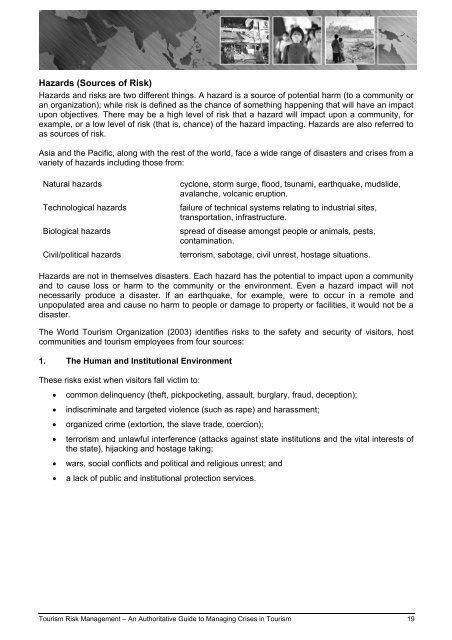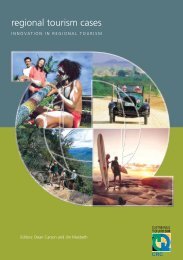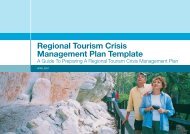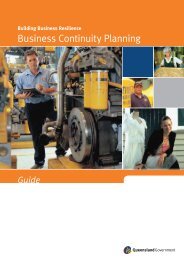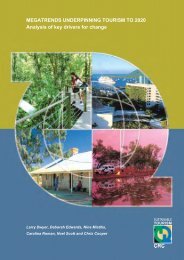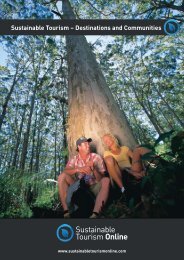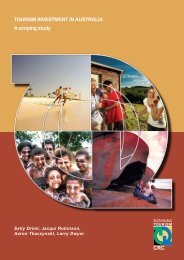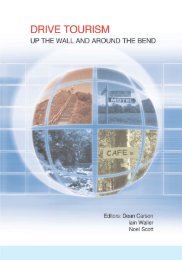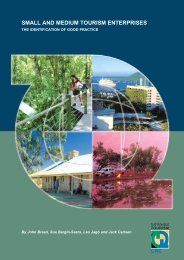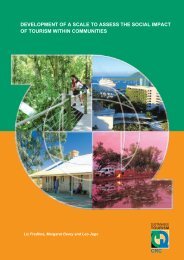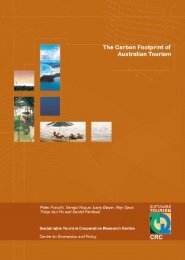Tourism Risk Management - Sustainable Tourism Online
Tourism Risk Management - Sustainable Tourism Online
Tourism Risk Management - Sustainable Tourism Online
You also want an ePaper? Increase the reach of your titles
YUMPU automatically turns print PDFs into web optimized ePapers that Google loves.
Hazards (Sources of <strong>Risk</strong>)<br />
Hazards and risks are two different things. A hazard is a source of potential harm (to a community or<br />
an organization); while risk is defined as the chance of something happening that will have an impact<br />
upon objectives. There may be a high level of risk that a hazard will impact upon a community, for<br />
example, or a low level of risk (that is, chance) of the hazard impacting. Hazards are also referred to<br />
as sources of risk.<br />
Asia and the Pacific, along with the rest of the world, face a wide range of disasters and crises from a<br />
variety of hazards including those from:<br />
Natural hazards<br />
Technological hazards<br />
Biological hazards<br />
Civil/political hazards<br />
cyclone, storm surge, flood, tsunami, earthquake, mudslide,<br />
avalanche, volcanic eruption.<br />
failure of technical systems relating to industrial sites,<br />
transportation, infrastructure.<br />
spread of disease amongst people or animals, pests,<br />
contamination.<br />
terrorism, sabotage, civil unrest, hostage situations.<br />
Hazards are not in themselves disasters. Each hazard has the potential to impact upon a community<br />
and to cause loss or harm to the community or the environment. Even a hazard impact will not<br />
necessarily produce a disaster. If an earthquake, for example, were to occur in a remote and<br />
unpopulated area and cause no harm to people or damage to property or facilities, it would not be a<br />
disaster.<br />
The World <strong>Tourism</strong> Organization (2003) identifies risks to the safety and security of visitors, host<br />
communities and tourism employees from four sources:<br />
1. The Human and Institutional Environment<br />
These risks exist when visitors fall victim to:<br />
• common delinquency (theft, pickpocketing, assault, burglary, fraud, deception);<br />
• indiscriminate and targeted violence (such as rape) and harassment;<br />
• organized crime (extortion, the slave trade, coercion);<br />
• terrorism and unlawful interference (attacks against state institutions and the vital interests of<br />
the state), hijacking and hostage taking;<br />
• wars, social conflicts and political and religious unrest; and<br />
• a lack of public and institutional protection services.<br />
<strong>Tourism</strong> <strong>Risk</strong> <strong>Management</strong> – An Authoritative Guide to Managing Crises in <strong>Tourism</strong> 19


